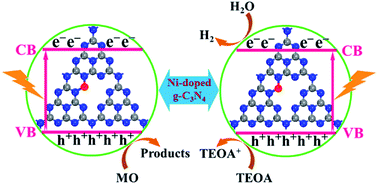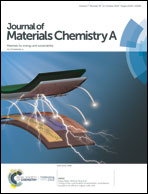Nickel formate induced high-level in situ Ni-doping of g-C3N4 for a tunable band structure and enhanced photocatalytic performance
Abstract
Metal doping is considered as an effective strategy to modify the electronic structure, optical absorption and charge separation of g-C3N4, thereby improving its photocatalytic activity for energy supply and environmental remediation. Herein, nickel formate is utilized for the first time for in situ Ni-doping of g-C3N4 nanosheets at a very high level via a one-step pyrolysis. Experimental results reveal the enhanced and expanded visible light absorption, narrowed band gap and suppressed charge recombination with the incorporation of Ni species. Furthermore, the positions of the valence band and conduction band of the g-C3N4 samples can also be easily modulated by Ni-doping. All of this enables superior photocatalytic activity of the obtained Ni-doped g-C3N4 in both dye degradation and hydrogen evolution under visible light compared with pure g-C3N4. Photocatalytic tests demonstrate that the Ni-doped g-C3N4 sample with an appropriate doping concentration can give a rate constant approximately 10 times greater than that of bare g-C3N4 for degradation of methyl orange, and can exhibit a hydrogen evolution rate of up to 155.71 μmol g−1 h−1, about 1.6 times as high as that of pure g-C3N4. This work introduces a new rational design for metal-doped g-C3N4 as an efficient visible-light-driven photocatalyst.



 Please wait while we load your content...
Please wait while we load your content...